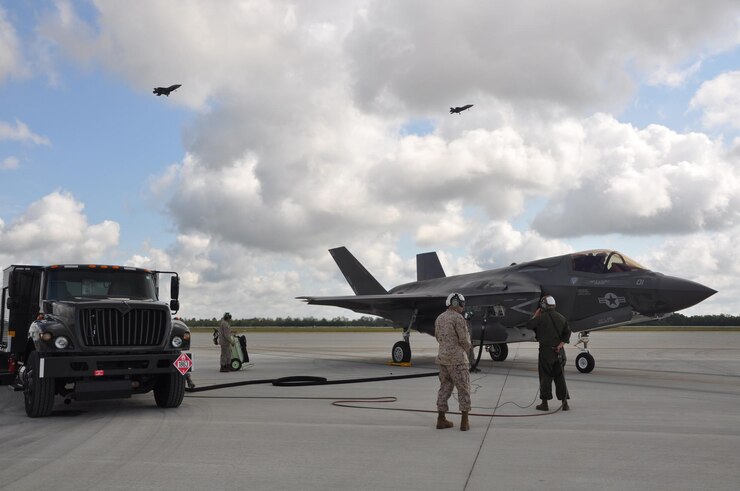On November 25, 2024, two U.S. Air Force B-52H Stratfortress bombers flew over Finland as part of a noteworthy training mission, in a crucial phase of NATO’s collective defense system due to heightened tension with Russia. This exercise, which was included in the Bomber Task Force mission 25 – 1, performed mock weapons throws and confirmed the increasing cooperation of Finnish and Swedish air forces with their American counterparts. The operation not only characterized the importance of geography of Finland with NATO but also marked an unequivocal warning to Russia about the deployment of NATO forces in the region.
The Context of the Mission
This training scenario is set against the background of the relations impacted by the new geopolitical reality as a result of the Russian Federation’s full scale invasion of Ukraine in February 2022. This aggression resulted in Finland and Sweden applying for N ATO membership in order to enhance their national security. In April 2023, Finland became a member of NATO and ever since, there has been a growing number of joint military trainings with American soldiers. The last B-52 mission is also an example of, this growing partnership and is part of a larger objective of countering challenges that may arise from Russia which is reaffirmed by their latest military progress, the hypersonic missiles.
Details of the Training Exercise
Since early November, the B-52 bombers were based at RAF Fairford in the UK, and flew into Finnish airspace after entering from the north of Norway. During the simulated weapon delivery, they were escorted by Finnish F/A-18C Hornets and Swedish Saab JAS 39 Gripens. This was the first time B-52s undertook such an exercise over the areas of Finland and under the NATO umbrella for joint operations.
U.S. Air Forces in Europe – Air Forces Africa, General James Hecker, said that this mission was a manifest of the support of the U.S. to its allies in Europe. “Together, we develop robust strategic relations that enhance the security as well as the stability of the region,” he said. This was an important exercise because collaboration in such activities improves not only operational effectiveness but also relations between NATO countries.
Implications for Regional Security
This training mission have undertakings which go beyond the borders of routine military exercises. NATO operates within Russian borders only because it wants to communicate to the rest that it is capable of acting in defense as unit. The positioning of US bomber jets within Nordic airspace acts as a severe barrier against further advances by Russia whose footprints in this area are in the books of history.
This also means that Finland is taking up more and more responsibility as a member of NATO. In July 2024, the Finnish Air Force started to engage in such training exercises with U.S. bombers aimed at operational readiness, which expands the Finnish’s ability to tackle any threats.
The operation of adding the B52s to the Finnish air space is an achievement in itself in terms of NATO’s planning and operational readiness.
Reactions from Russia
Moscow has, as predicted, reacted in a very harsh manner to such military moves. The Russian Defense Ministry has regularly been tracking movements of US forces around the Russian borders and has in the past dispatched fighter aircraft to confront American bombers flying about in that region
After the latest B-52 mission, analysts believe Russia could consider these activities as ‘flashing the gun’ and this may encourage Russia further to deepen its military stance in the western flank.
To prevent any misunderstandings that may lead to conflict, NATO is obligated to deliver a communication strategy that would ensure Russia understands its position within political developments. Throughout all this, when the emphasis on militarisation is strong, diplomacy must still function.
Future Prospects for NATO Operations
In the near future, similar training missions across the European region can be expected as a manifestation of NATO’s commitment to the principle of collective defense. Deploying American bombers into Europe is intended to enhance deterrence, but it also assists member states in working together even more closely. In the face of ongoing geopolitical tensions, such activities will become increasingly useful in the region in terms of providing security.
Additionally, it is also likely that as Finland deepens its defense cooperation with NATO partners, it will actively seek more sophisticated military assets to be stationed within its borders. This may encompass more joint exercises or even forward deployed sites for allied forces as part of a wider plan in order to strengthen deterrence against Russian aggression.
Conclusion
Recent history has shown us that B-52 bombers from the US have been flying over Finland as part of a training mission. This is regarded as an important step as far as NATO’s collective defense is concerned when we consider the fact that Russia has become increasingly aggressive of late. NATO’s perspective in this case is quite clear: the Alliance integrates capable military forces and works with its members in order to improve regional security and deterrence of trouble makers. Both sides are presented with a challenging situation. Looking into the future, it is reasonable to expect that learning how to peacefully coexist and counter threats in Europe will involve active engagement and cooperation.




